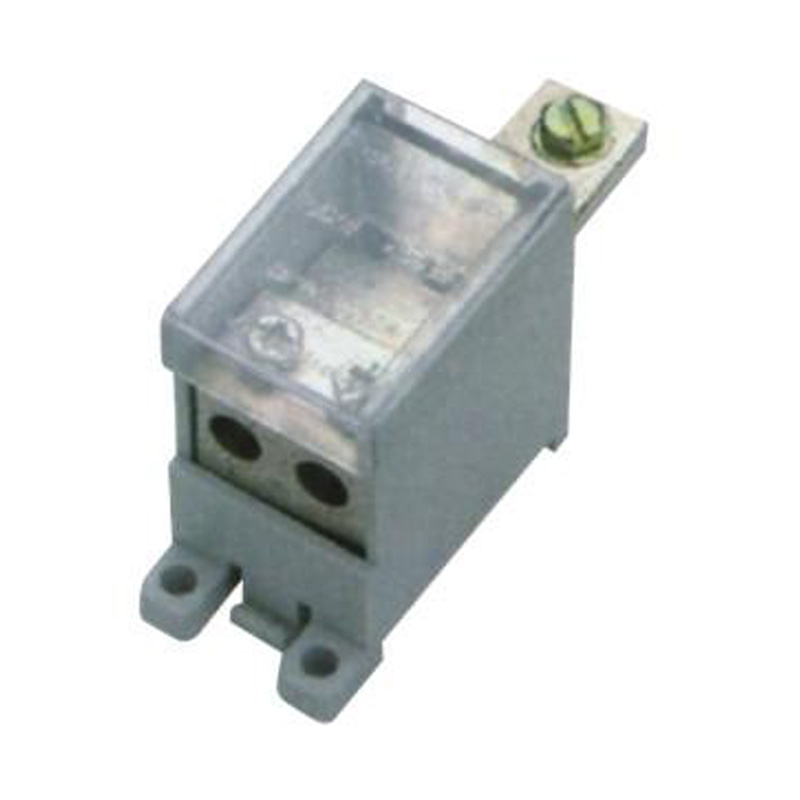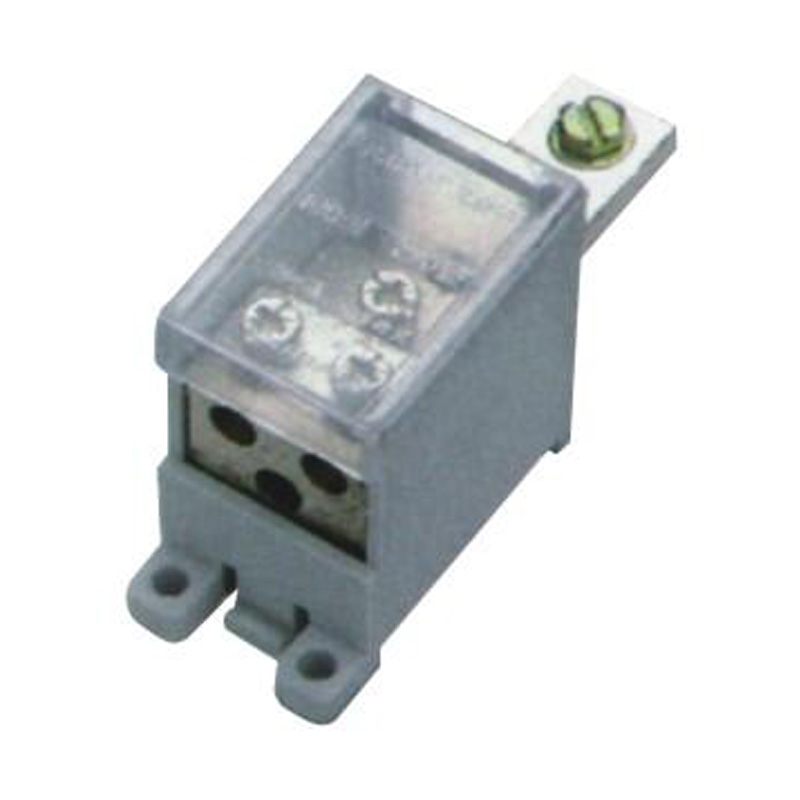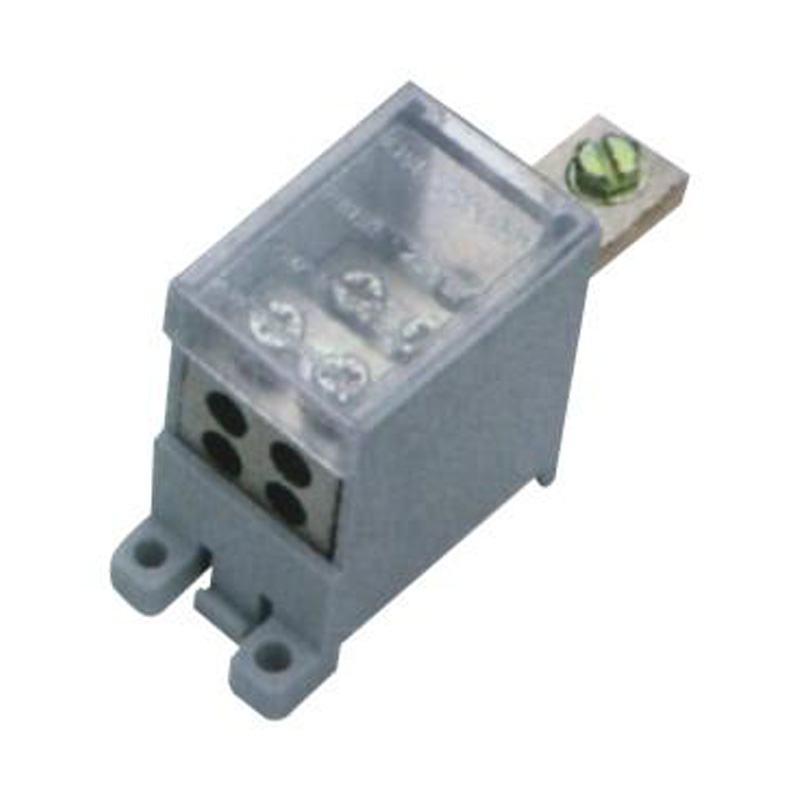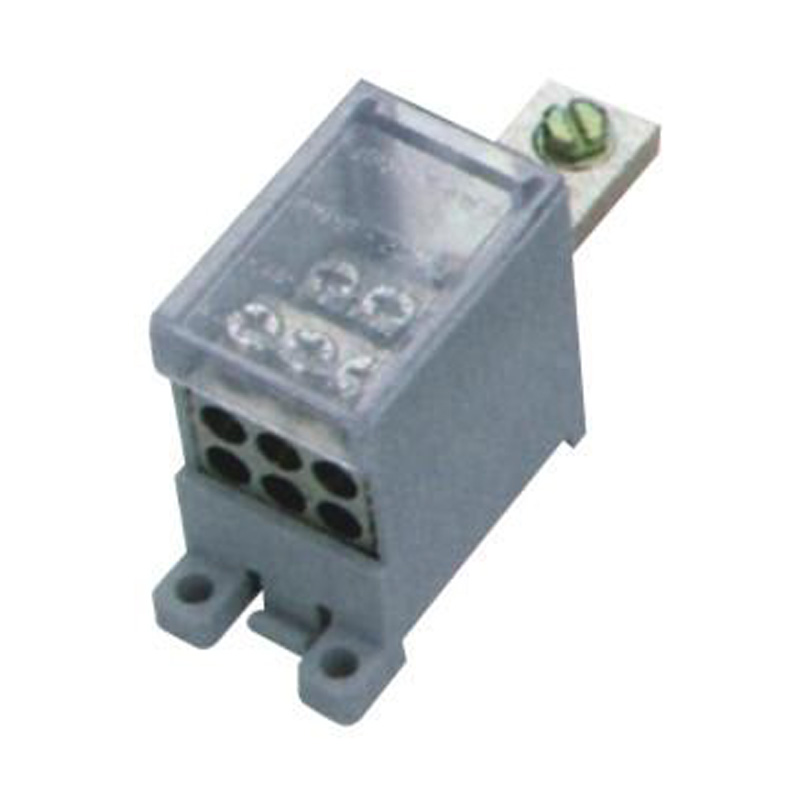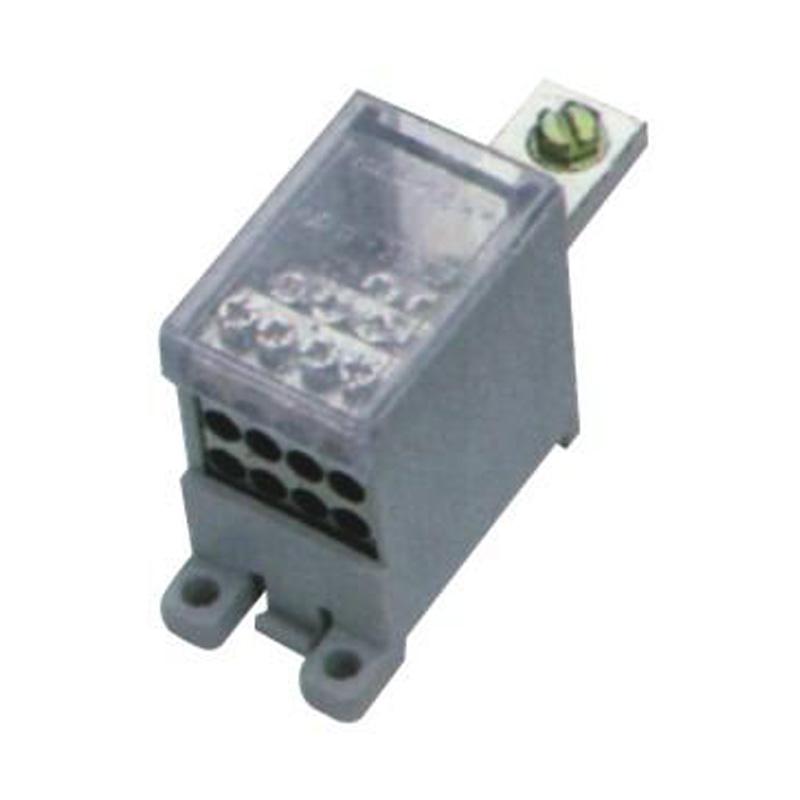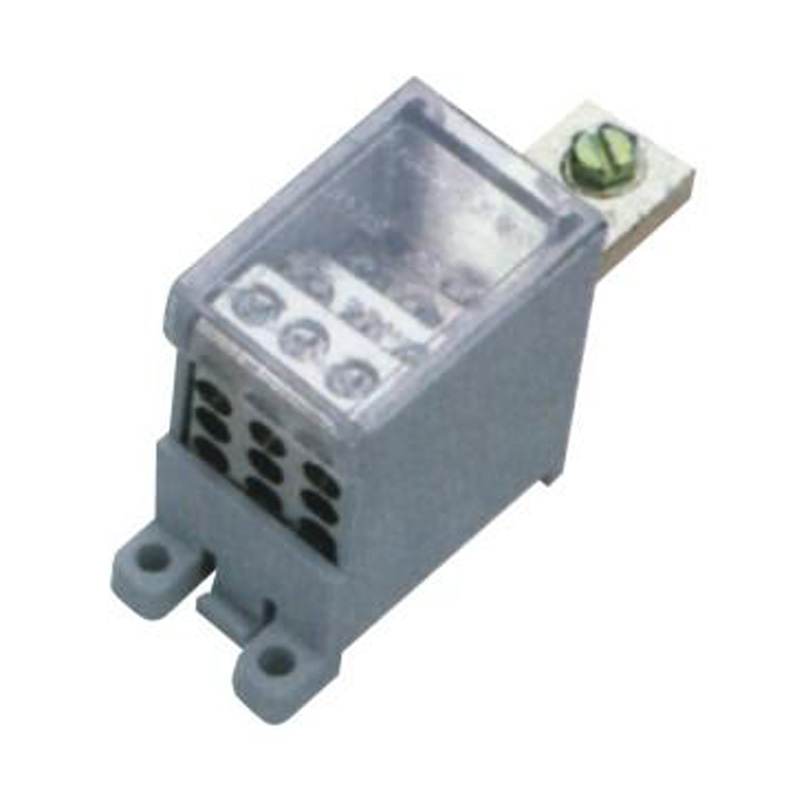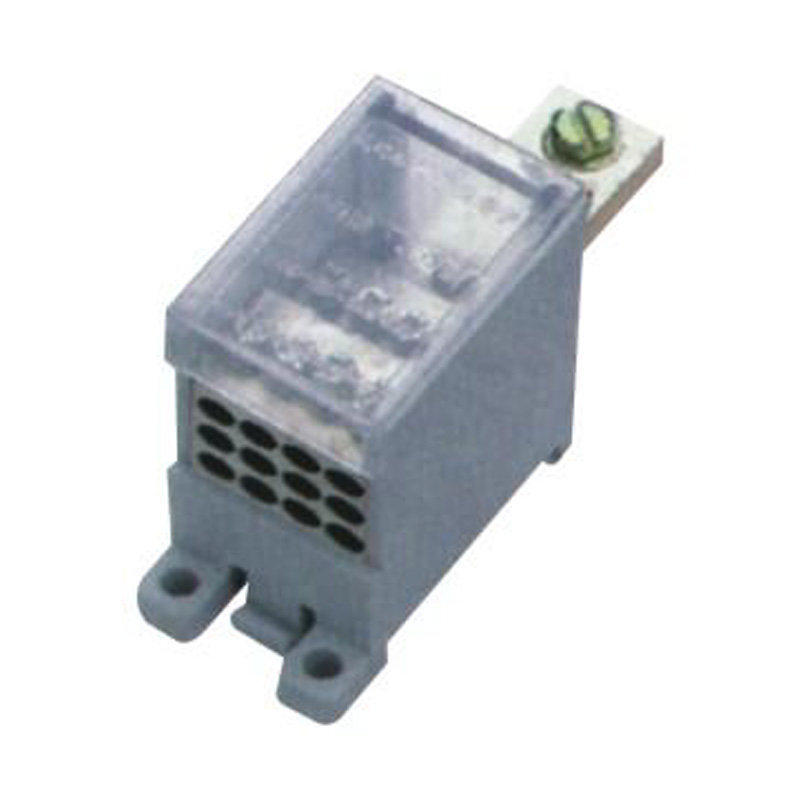In modern electrical control panels, a dual row terminal block combined with Din Rail Terminal Blocks provides an efficient soluti...
READ MORENose-Type Neutral Line Terminal Manufacturer
Nose-Type Neutral Line Terminals are professionally used for providing secure and reliable connections for neutral conductors in electrical systems. These terminals are specifically designed to offer a compact and efficient solution for managing neutral lines in various electrical installations, including distribution boards, control panels, and metering boxes.
The unique nose-type design of these terminals allows for easy insertion and secure connection of neutral conductors, ensuring stable electrical performance. The terminals are engineered with high-quality materials to provide durability and reliability, even under continuous electrical load and varying environmental conditions.
Nose-Type Neutral Line Terminals are currently an innovative solution for managing neutral connections in electrical systems. They simplify the installation process by providing a compact and secure connection point for neutral conductors, enhance system reliability through their robust design, and ensure consistent electrical performance. Their versatile design makes them suitable for a wide range of residential, commercial, and industrial applications where maintaining a stable neutral connection is essential for safe and efficient operation.
FJ6NB-250/16-50/2x25 Neutral Line Terminal Block
FJ6NB-250/16-50/2x25
One-inlet,two-outlet
Inlet wire:16-50mm²,outlet wire:1.5-25mm²
Order number:151007
FJ6NB-250/16-50/3x16 Neutral Line Terminal Block
FJ6NB-250/16-50/3x16
One-inlet,three-outlet
Inlet wire:16-50mm²,outlet wire:1.5-16mm²
Order number:151008
FJ6NB-250/16-50/4x16 Neutral Line Terminal Block
FJ6NB-250/16-50/4x16
One-inlet,four-outlet
Inlet wire:16-50mm²,outlet wire:1.5-16mm²
Order number:151009
FJ6NB-250/16-50/6x16 Neutral Line Terminal Block
FJ6NB-250/16-50/6x16
One-inlet,six-outlet
Inlet wire:16-50mm²,outlet wire:1.5-16mm²
Order number:151010
FJ6NB-250/16-50/8x10 Neutral Line Terminal Block
FJ6NB-250/16-50/8x10
One-inlet, eight-outlet
Inlet wire:16-50mm²,outlet wire:1.5-10mm²
Order number:151011
FJ6NB-250/16-50/9x16 Neutral Line Terminal Block
FJ6NB-250/16-50/9x16
One-inlet,nine-outlet
Inlet wire:16-50mm²,outlet wire:1.5-16mm²
Order number:151012
FJ6NB-250/16-50/12x10 Neutral Line Terminal Block
FJ6NB-250/16-50/12x10
One-inlet,twelve-outlet
Inlet wire:16-50mm²,outlet wire:1.5-10m"²
Order number:151013
Search
Categories
-
Energy Measuring Terminal Block(314)
- Energy Measuring Joint Terminal Block(16)
- Polycarbonate Energy Measuring Terminal Block(24)
- Standard Wiring Energy Measuring Terminal Block(4)
- Transparent Shell Energy Measuring Terminal Block(6)
- Multifunctional Test Energy Measuring Terminal Block(10)
- Intelligent Safety Energy Measuring Terminal Block(6)
- Single-Phase Multi-Circuit Output Terminal Block(12)
- Self-Elevating Metering Box Terminal Block(7)
- One Household One-Meter Meter Box Dedicated Terminal Block(56)
- Three-Phase Metering Box Dedicated Terminal Block(24)
- Repeatable Grounding Line Terminal Block(20)
- Terminal Block for One-Inlet Multi-Outlet Metering Box(15)
- Closed Terminal Block(11)
- Heavy Current Terminal Block(48)
- Self-Boosting Terminal Block(5)
- Intelligent Self-Locking Terminal Block(3)
- Tool-Free Crimping Type Terminal Block(5)
- Wide Range of Wire Diameters Terminal Block(5)
- Combined Type Energy Measuring Terminal Block(37)
-
Switch Terminal Block(55)
- Pin-Type Incoming Line Switch Terminal Block(4)
- Multi-Way Connection Switch Terminal Block(4)
- Plug-pin Switch Terminal Block(7)
- Combined Type Switch Terminal Block(7)
- High Contact Cross Section Switch Terminal Block(7)
- Wide Range Switch Terminal Block(11)
- One Way in Switch Terminal Block(12)
- Equipped with Circuit Breaker Switch Terminal(3)
-
Heavy-current Terminal Block(631)
- Modular Building Block Terminal Block(156)
- Spherical Non-Destructive Crimp Terminal(120)
- Dual-Mode Connection Electrical Terminal(90)
- Anti-Electricity-Theft Terminal Block(74)
- Convenient Connection Terminal Block(12)
- High-Contact Section Terminal Block(12)
- Wide Range of Wire Diameters Neutral Line Terminal(9)
- Heavy-Current Neutral Line Terminal(9)
- Upper and Lower Rows of Neutral Terminal(2)
- Independent Neutral Line Terminal(7)
- Nose-Type Neutral Line Terminal(7)
- Rail Type Neutral Line Terminal(9)
- Fixed Neutral Line Terminal(12)
- Double Rail Assembly Electrical Terminal(19)
- Blue Jack-Up Terminal(6)
- Black Base Copper Bar Terminal(5)
- Compact Terminal Block(16)
- Precision Terminal Block(23)
- U-Shaped Harpoon Terminal(2)
- Grounding Metering Box Terminal Block(12)
- High-Performance Terminal Block(19)
- Multifunctional Terminal Block(10)
- Din Rail Terminal Block(76)
- Watt-hour Meter Connector(49)
-
Energy Meter Accessories(116)
-
-
As electrical systems become more advanced, the demand for more reliable, durable, and efficient components grows. Connectors Term...
READ MORE -
Ensuring that connector terminals are properly installed is critical for the long-term performance and reliability of any electric...
READ MORE -
Selecting the correct terminal is essential for the stability and efficiency of any electrical system. For professionals in the el...
READ MORE -
Electrical systems rely on high-quality components for safe, efficient, and reliable operation. One such crucial element is the co...
READ MORE -
Using the right junction box and circuit breaker block junction box can bring more than safety — it can significantly improve inst...
READ MORE
What Are The Differences Between Nose-Type Neutral Line Terminals And High-Current PCB Screw Terminals?
1. Design and Structure
Nose-Type Neutral Line Terminals
These terminals are typically compact, designed to accommodate a wide range of wire diameters. Their “nose” shape provides a clear point for conductor insertion, allowing quick and secure connections. The design is well-suited for panels where neutral lines from multiple circuits converge, ensuring tidy and organized wiring.
High-Current PCB Screw Terminals
High-current PCB screw terminals are built to attach directly to printed circuit boards (PCBs) and handle larger currents. The screw mechanism ensures strong mechanical and electrical contact. These terminals often feature thicker conductive paths and robust insulation to support higher loads, making them suitable for power distribution and industrial electronic applications.
Comparison: The nose-type terminals prioritize compactness and adaptability for multiple neutral lines, while high-current PCB screw terminals focus on strength, stability, and handling heavier currents on circuit boards.
2. Current Capacity and Application
Nose-Type Neutral Line Terminals
These terminals are designed for standard neutral connections, supporting moderate current loads typical in residential or light commercial systems. They are commonly found in distribution panels, energy meters, and control boxes where organized neutral connections are critical.
High-Current PCB Screw Terminals
These terminals are specifically engineered for higher current applications, sometimes exceeding tens of amperes. They are ideal for power modules, industrial equipment, and high-current PCBs. The robust screw mechanism ensures minimal resistance and stable contact, even under sustained high-current conditions.
Comparison: Nose-type terminals are suitable for moderate currents and multiple neutral connections, while high-current PCB screw terminals are tailored for heavy-duty applications requiring reliable contact and higher current tolerance.
3. Installation and Maintenance
Nose-Type Neutral Line Terminals
Installation is usually straightforward: wires are inserted into the nose-shaped opening and clamped securely. This allows for quick assembly and easy identification of circuits. Maintenance is simplified because multiple neutral lines are grouped logically, making inspections faster and more organized.
High-Current PCB Screw Terminals
These terminals require screws to be tightened to secure the conductor. While installation may take slightly longer, it ensures strong mechanical and electrical contact. Maintenance involves checking screw torque and inspecting the conductor for corrosion or wear, which ensures long-term stability in high-current circuits.
Comparison: Nose-type terminals emphasize speed, organization, and flexibility, while PCB screw terminals emphasize strength, durability, and precise electrical contact.
4. Space and Panel Integration
Nose-Type Neutral Line Terminals
Their compact design allows multiple terminals to be mounted in close proximity. This is ideal for distribution panels or areas where space is limited.
High-Current PCB Screw Terminals
These terminals are larger to accommodate heavier currents and robust screws. They require more space on a PCB but provide stable and reliable connections under demanding electrical loads.
Comparison: Nose-type terminals optimize panel space and organization, while high-current PCB screw terminals prioritize secure connections over compactness.
Nose-type neutral line terminals and high-current PCB screw terminals serve distinct purposes in electrical systems. Nose-type terminals excel in organized wiring, moderate current distribution, and compact panel integration. High-current PCB screw terminals are built for durability, handling heavier loads, and providing reliable connections on printed circuit boards.
By understanding these differences in design, current capacity, installation, and space requirements, technicians and engineers can select the appropriate terminal type for their specific application, ensuring efficiency, reliability, and long-term performance.



 English
English Español
Español عربى
عربى